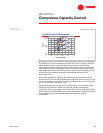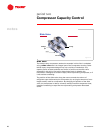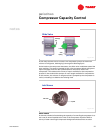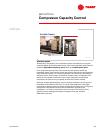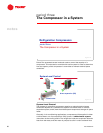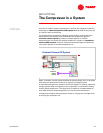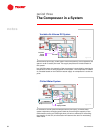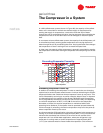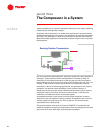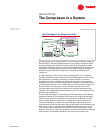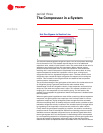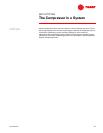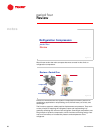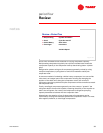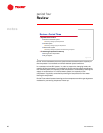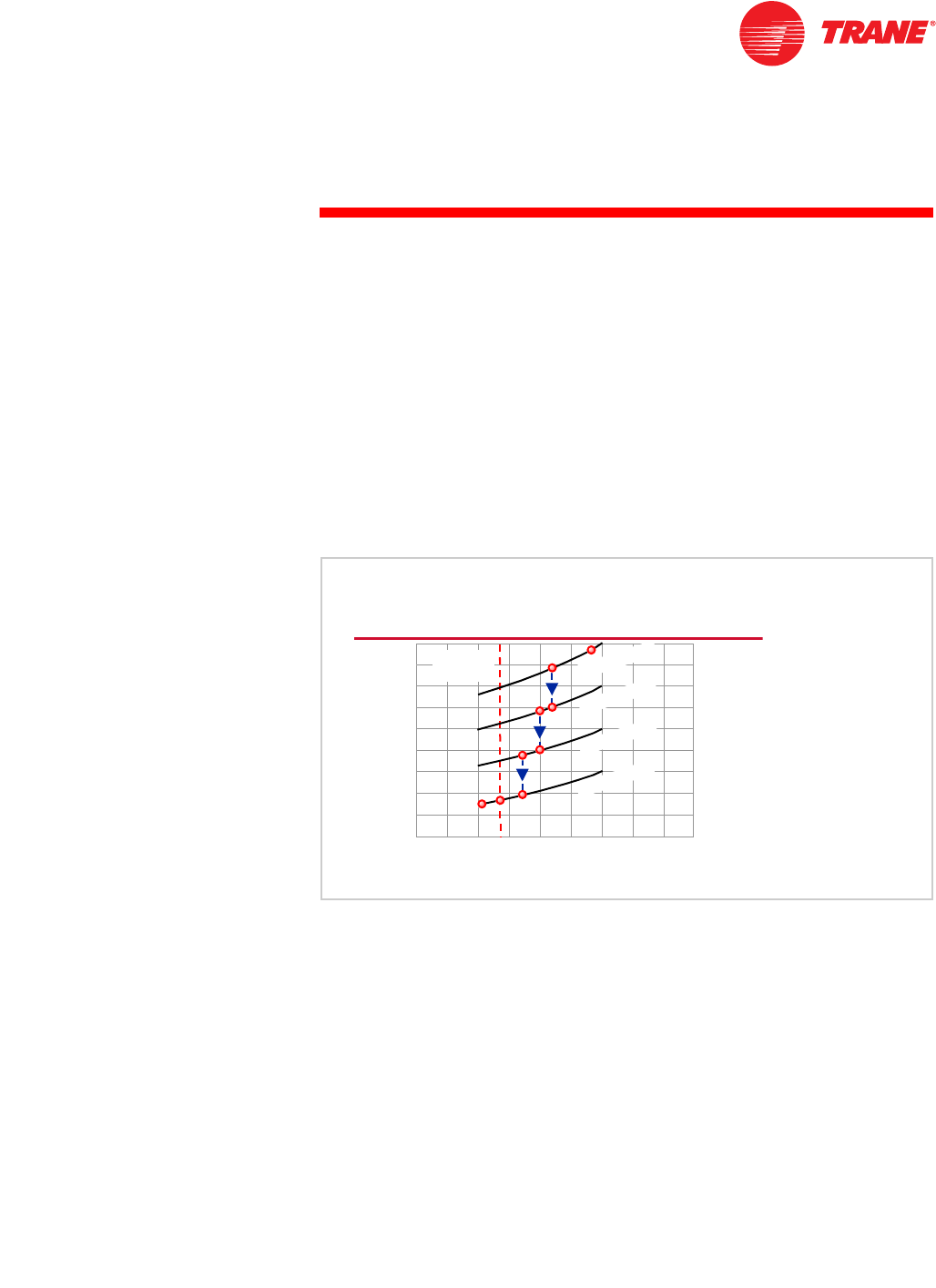
TRG-TRC004-EN 33
period three
The Compressor in a System
notes
In a VAV chilled water system (shown in Figure 46), the capacity of the chilled-
water coil is controlled to maintain the desired supply air temperature. By
sensing the supply air temperature, a controller varies the flow of water
through the coil by modulating the valve. Varying the water flow maintains the
temperature of the air as the flow rate of the air changes to match the space
load.
In a constant-volume chilled-water system, the capacity of the chilled-water coil
is controlled by directly sensing space temperature and varying the flow of
water through the coil by modulating the valve. Varying the water flow changes
the temperature of the air leaving the coil to match the space load.
In either case, the capacity of the compressor is generally controlled by sensing
the temperature of the water leaving the evaporator and comparing it to the set
point.
Preventing Evaporator Freeze-Up
In addition to unloading the compressor in order to match the ever-changing
system load, a second system-related concern involves maintaining the suction
temperature above the conditions where evaporator freeze-up may occur. This
can be illustrated by returning to an earlier example. Assume that, in response
to a decreasing load, the capacity of the 40-ton [105.5-kW] scroll-compressor
unit is progressively reduced to a minimum of 8 tons [28.1 kW], corresponding
to a suction temperature of 28°F [-2.2°C] (H). If the load on the evaporator
decreases no further, the suction temperature is maintained within safe
operating limits. However, if the system must be operated at loads below this
minimum stage of unloading, the suction temperature may fall to the point (I)
where evaporator freeze-up can occur.
In a direct-expansion (DX) application, where the refrigerant in the evaporator is
cooling air, a suction temperature of approximately 28°F [-2.2°C] can cause the
moisture that condenses out of the air to form frost on the surface of the
evaporator coil. In a chilled-water application, where the refrigerant in the
evaporator is cooling water, a suction temperature of approximately 30°F
[-1.1°C] can cause the water to freeze inside the evaporator. (This minimum
3UHYHQWLQJ(YDSRUDWRU)UHH]H8S
VXFWLRQWHPSHUDWXUH
VXFWLRQWHPSHUDWXUH
FDSDFLW\
FDSDFLW\
)
)
>&@
>&@
)
)
>&@
>&@
)
)
>&@
>&@
)
)
>&@
>&@
WRQV
WRQV
>N:@
>N:@
WRQV
WRQV
>N:@
>N:@
WRQV
WRQV
>N:@
>N:@
F
R
P
S
U
H
V
V
R
U
V
F
R
P
S
U
H
V
V
R
U
V
F
R
P
S
U
H
V
V
R
U
V
F
R
P
S
U
H
V
V
R
U
V
F
R
P
S
U
H
V
V
R
U
F
R
P
S
U
H
V
V
R
U
F
R
P
S
U
H
V
V
R
U
V
F
R
P
S
U
H
V
V
R
U
V
$
%
'
&
(
)
+
*
IUHH]HXS
IUHH]HXS
RFFXUV
RFFXUV
,
Figure 47



